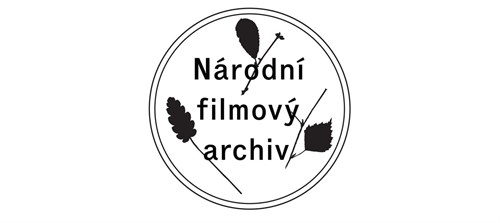
The exhibition traces the parallel processes of modernisation and women‘s emancipation, which accompanied the birth and growth of Czech modern culture and culminated in the interwar period. One of the common denominators of these processes was the character of a new – civilised and modern – woman, whose variants were concurrently appearing elsewhere in Europe. This figure became one of the important emblems of the newly-established state – and through it the first Czechoslovak Republic presented itself inwardly and outwardly as a modern, progressive and democratic state.
The underlying idea of the exhibition is to observe the parallel processes of modernisation and women's emancipation accompanying the origin and development of modern Czech culture, which culminated during the first Czechoslovak republic (1918-1938). One of the keystones of these processes was the concept of civilised woman, variants of which concurrently appeared elsewhere in Europe: in the German speaking countries the accepted usage was "Neue Frau", in France she was termed "la femme nouvelle" and in the Anglo-Saxon world she was "modern woman". However, the adjective "civilised" carries quite specific connotations. It refers to the modernist doctrine of progress, but simultaneously accentuates order, rationality, uniformity and discipline, by which the new age was to essentially distinguish itself from everything uncivilised, uncultivated, natural and undisciplined, both at the level of gender difference (reactionary and irrational women), and the racial/ethnic level (primitive "savages").
In the Czech milieu the term was used for the first time at the exhibition Civilised Woman / Zivilisierte Frau, at the turn of 1929-1930 in Brno. This exhibit, as well as the more conformist, but much more extensive and discussed (although today nearly forgotten) Exhibition of Modern Woman publicising the successes of Czechoslovak women in all areas of public life, which was held in Brno in 1929, served as the acknowledged primary source for the current exhibition Civilised Woman: Ideal and Paradox of the Visual Culture of the First Czechoslovak Republic.
Although the Civilised Woman / Zivilisierte Frau project and the eponymous publication from the turn of 1929 and 1930 primarily concentrated on fashion (hence its subheading "How the Cultivated Woman Should Dress / Wie sich eine kultivierte Frau ankleiden soll"), the promulgated ideal of civilised woman resonated far beyond the limits of clothing and appearance. Over time, the civilised (modern, new) woman became one of the important emblems of the newly established Czechoslovakia - and through her the First Czechoslovak Republic presented itself, both inwardly and outwardly, as a modern, progressive, democratic and "civilised" state.
The character of the civilised woman strongly projected itself onto period painting, sculpture and photography and reverberated in the work of the first generation of female artists who were university graduates. However, her artistic depictions (and portraits) constitute only one of the sections of the exhibition. The focus of its attention is equally centred on the aspects of visual culture which had a direct impact on women between the wars, inclusive of those outside elitist art-loving circles. Consequently, it lays an emphasis on the lifestyle and housing, fashion and ventures into transfers of modern womanhood into pop culture, represented mainly by advertising, film and entertainment picture magazines, including humorous periodicals. Caricatures and satirical drawing in particular eloquently illustrate the ideological division in how the First Czechoslovak Republic's society put up with women's emancipation.
Taking on the form of a collage of multi-faceted visual material the exhibition shows how interwar artists, designers, architects, photographers and film-makers (renowned and nameless creators, men and women) worked with the different variations of civilised woman - an independent, modern, working, cultivated or simply "new" woman who, by her appearance and behaviour, radically freed herself from the lingering idea of the conservative, impractical woman of the old epoch, enslaved by her feelings and instincts - and how she was reflected by period journalism. It also demonstrates how equivocal the figure of civilised/modern/new woman was, how iconographically and ideologically she helped co-create the new woman's identity in various segments of society, but simultaneously, especially in her commercialised guise, cemented the patriarchal and heterosexual model of the social and cultural order and metamorphosed into a shallow media toy.
The exhibition opens up important but so far unexplored niches of visual culture in Czechoslovakia between the wars. By studying the fine and often complicated web of relations between modernisation and women's emancipation it also hopes to highlight their relevance - or challenge - for our present time.
The exhibition is held under the auspices of JUDr. Markéta Vaňková, the Mayor of the City of Brno.
Partners:

